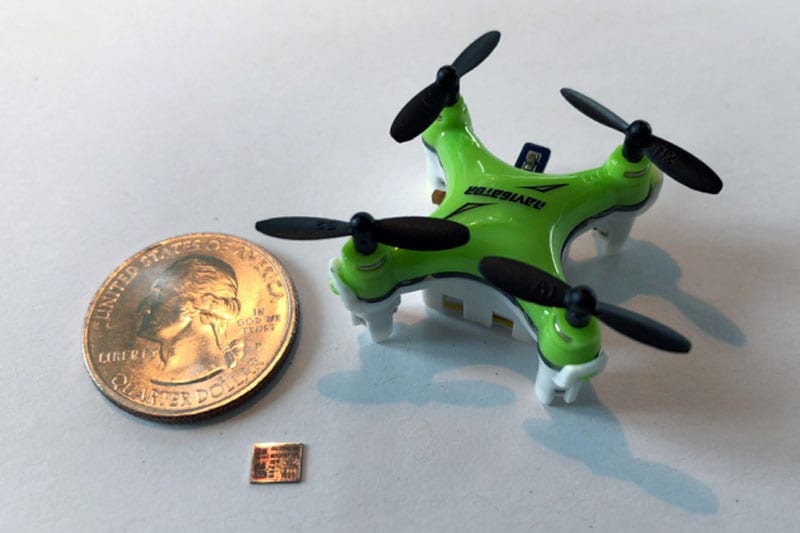
News
This Tiny Chip From MIT Can Help Nano-Drones Navigate
Last year, researchers from MIT designed a computer chip that would allow tiny nanodrones the size of bees to navigate autonomously.
Now, they have gone one step further, announcing this week that they have miniaturized their drone chip even further, driving down both the size of the chip as well as its power consumption.
In flight, complexities of computing power needed to enable capabilities such as imaging and autonomous navigation are often a drain on the drone’s battery.
By improving the size and weight, as well as the efficiency and the processing power of computing chips for drones, flight length and range are increased.
The team from MIT, co-led by Vivienne Sze, associate professor in MIT’s Department of Electrical Engineering and Computer Science (EECS), and Sertac Karaman, the Class of 1948 Career Development Associate Professor of Aeronautics and Astronautics, have called their new custom chip ‘Navion‘, and the technology behind it is known as Visual-Inertial Odometry (VIO), a special type of Simultaneous Localization and Mapping (SLAM).
No larger than a child’s fingernail, the physical measurements of the chip is only 20 square millimtres, and it can process real-time images at a rate of 171fps.
That’s quite astonishing for something that uses only 24 milliwatts – 1/1000 of that of a 24W lightbulb – of power – making it even more energy efficient than ETH Zurich’s 94 milliwatt drone chip.
As well as processing the imagery required for the VIO navigation system, the Navion also takes inertial measurements which it combines with the images to determine its location.
This system, in addition to being suitable for inclusion in tiny robots and drones, is also useful in situations where GPS data is not readily available such as remote and underground places.
Karaman says the technology could range far and wide across the globe’s skies, or be applied internally such as explorative medical tests.
“I can imagine applying this chip to low-energy robotics, like flapping-wing vehicles the size of your fingernail, or lighter-than-air vehicles like weather balloons, that have to go for months on one battery,” he says Karaman.
“Or imagine medical devices like a little pill you swallow, that can navigate in an intelligent way on very little battery so it doesn’t overheat in your body. The chips we are building can help with all of these.”
The team will present their nano-drone chip at the Symposia on VLSI Technology and Circuits this week using a miniature racing car, and will eventually test it on a miniature drone.
How useful was this post?
Click on a star to rate it!
Average rating 0 / 5. Vote count: 0
No votes so far! Be the first to rate this post.
We are sorry that this post was not useful for you!
Let us improve this post!
Tell us how we can improve this post?


















